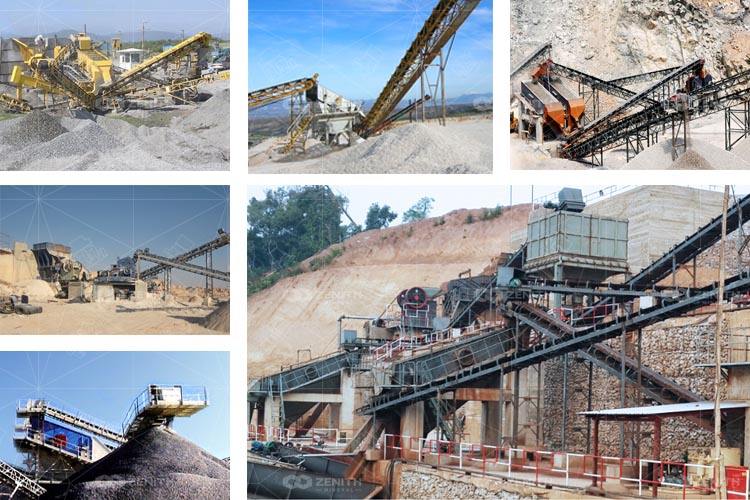In jaw crusher, the crushing cavity is formed by movable jaw plate and fixed jaw plate. As we know, raw materials are crushed in the crushing cavity, so jaw plates directly contact with the raw material and are easily damaged. In this case, jaw plates are the main wear-resistant parts in jaw crusher and need to be changed regularly. Knowing the reasons about jaw plates’ abrasion and knowing how to reduce the abrasion means a lot in extending the service life of jaw crusher, so in this article, we mainly talk about the abrasion reasons of jaw plates in jaw crusher.
If there are impurities in the jaw plates of jaw crusher, it will cause the stress concentration. And the edges of impurities are easy to form cracks, reducing the contact fatigue life of material. The structure states, internal defects and some other factors also have great influence on the abrasion of jaw plates. The mutation of structural constituent, fine and even crystalline grain, and spherical and evenly distributed carbide all can help to improve the rolling contact fatigue life. When the conditions of undissolved carbide are the same, the mass fraction of carbon in the martensite of jaw plates is about 0.4%-0.5%. At this time, the strength and toughness of material are ideally matched and the contact fatigue life is also longer. For the undissolved carbide, through proper heat treatment, we can make them less and more even to avoid the appearance of bulk or zonal carbide in order to eliminate fatigue cracks.
According to experiments, properly reduce the surface roughness of jaw plates is an effective way to improve the fatigue abrasion life. And the surface roughness of jaw plates is related with the contact stress of jaw plates’ surface. Generally, when the contact stress or hardness of surface of jaw plates is high, the roughness of jaw plates’ surface is relatively low.
For movable jaw plate and fixed jaw plate, the tooth cuspis should face the tooth vale. In the working process of jaw crusher, under most circumstances, the raw materials have irregular shapes and they are crushed by squeezing force through point contact. Besides, the gravity of raw materials brings continuous friction to the movable jaw plate and fixed jaw plate, causing friction force and shearing stress. The movable jaw plate moves back and forth to the fixed jaw plate under the driving force of eccentric shaft. In this process, raw materials are crushed.
Under the effect of friction resistance, the accelerated speed of raw materials when they sliding down along the jaw plates is smaller than the acceleration of gravity. And the jaw plates bear impact force and shearing force when the raw materials are fed into crushing cavity, which will also damage the jaw plates. At the same time, the movable jaw plate moves up and down in the perpendicular direction, making the raw materials and jaw plates have relative slip. In this case, the jaw plates bear squeezing force and gravity of raw materials, which will produce sags and crests of the surfaces of jaw plates and scratches produced by shearing force. From the above information, we can see that in the crushing process, the raw materials under not only squeezing force but also shearing stress.
To be continued

A jaw crusher is a type of primary crusher used in mines and ore processing plants. It reduces large aggregates to smaller aggregate. Jaw crushers are an excellent choice for primary crushing in a wide variety of applications.

We have different types of jaw crusher for sale Philippines, such as PE series jaw crusher, PEW series jaw crusher, C6X series jaw crusher and mobile jaw crusher etc.

In South Africa, Jaw crusher in south africa has wide applications in mining, metallurgy, construction, road, railway, water conservancy, chemical and many other industries.
Fill your requirements here, and we'll send the custmized solution and quotation to you by the reserved contact information.